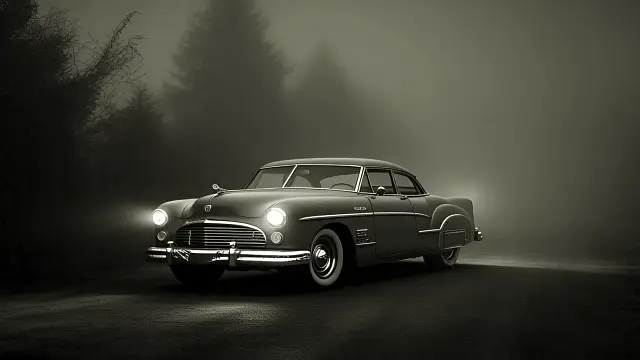In the early spring, a few years ago, a witness beheld a bizarre scene in Oklahoma City. As the golden dawn bathed the morning in its glow and a mystical fog clung to the ground, the witness’s eyes locked onto an old-style cruiser on the exit ahead. The car, with its imposing, boxy frame and large, round headlights, appeared ghostly and out of place. Initially, she assumed a classic car enthusiast was out for a joyride. But who, in their right mind, would choose to navigate the pre-8 a.m. traffic for a leisurely drive?
In a heartbeat, she glanced into her rearview mirror and back to the road—only to find the cruiser had vanished without a trace! The exit lane stretched on, with no turns or side roads where the vehicle could have disappeared. Doubting her senses, she paused at the stop sign. Through the fog, the roads flanking the overpass were clearly visible.
No cars. No movement. To the south, the road led to the airport; to the north, an expanse of open country before the industrial zone.
Unearthed reports revealed that police officers indeed patrolled these roads.
But some never made it back. On the ominous morning of April 5, 1972, around 6 a.m., a distress call was placed to police dispatch. It directed them to a remote pond along the airport’s perimeter near SW 74th and MacArthur. A 26-year-old policeman named Joe McArthur had tragically taken his own life, notifying homicide and the coroner to attend to his death.
Is it possible that, even now, a spectral officer continues his patrol in the amber glow of dawn, shrouded in fog, eternally bound to these roads?

